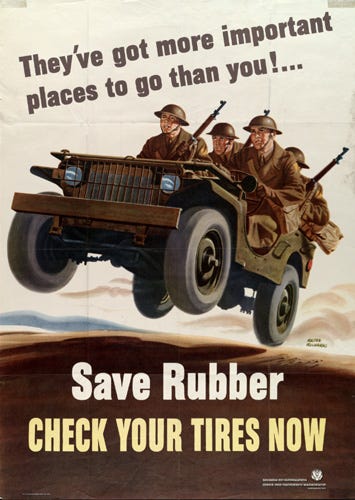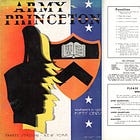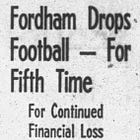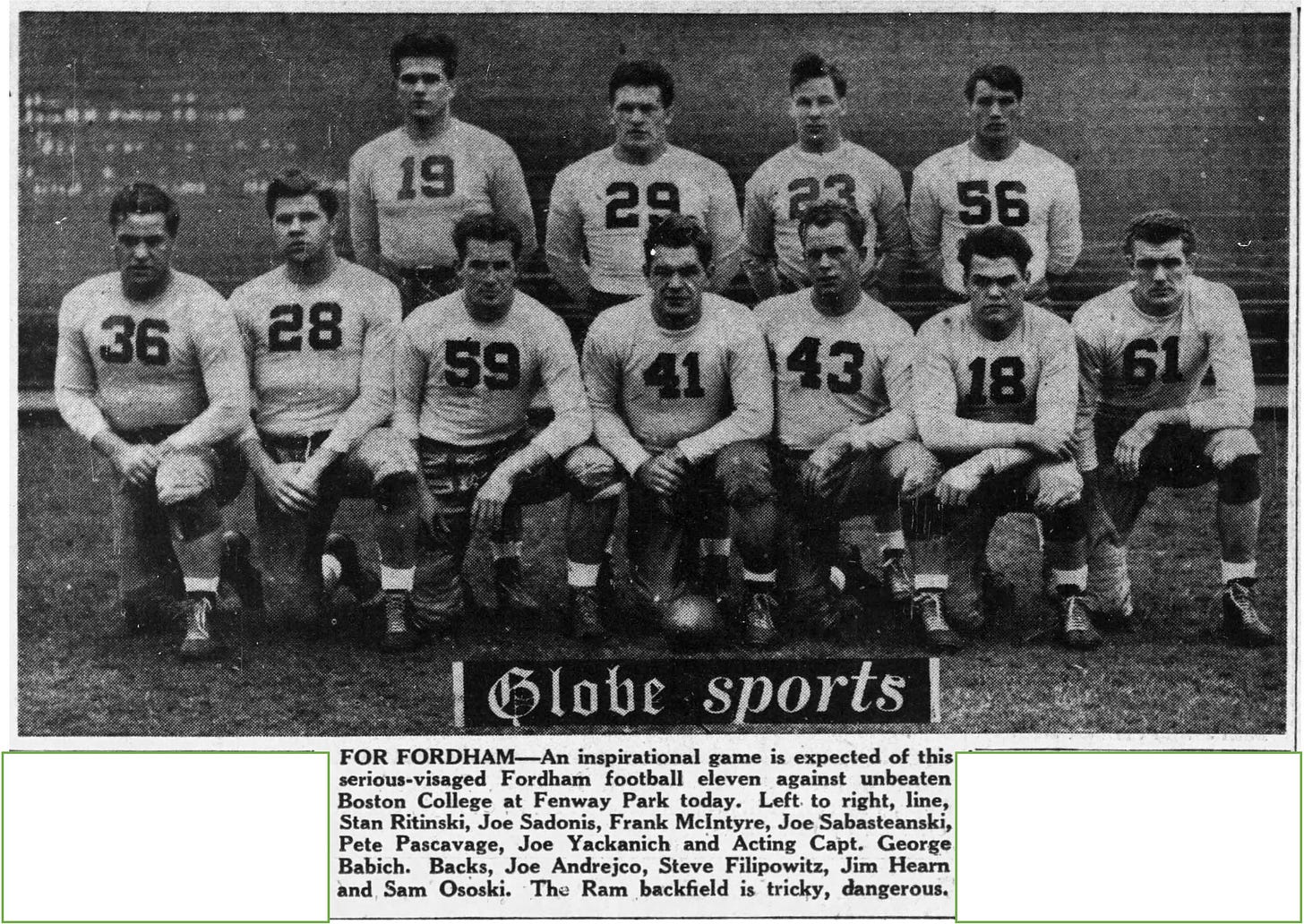Today's Tidbit... 1942 NYC College Football and Conservation Poster
Sometimes you stumble across items that encapsulate a time and its issues. One crossed my path recently when Bluesky user Static Klinger posted an image from the New York Transit Museum.
Due to World War II, the 1942 poster encouraged New Yorkers to conserve gasoline and rubber by taking the subway to college football games in New York City rather than using private transportation or a taxi. Tire rationing started nationwide in late December 1941, and gasoline rationing went into effect on the East Coast in May 1942.
Big-time college football was still a thing in NYC in 1942. Yankee Stadium and the Polo Grounds were the sites of games between out-of-town teams, including the November 21 battle between Army and Princeton, when the game program included instructions for evacuating Yankee Stadium in the event of an enemy air raid.
The poster reminds us that New York City had four home-grown football teams in 1942. Columbia, Manhattan, the City College of New York, and Fordham fielded teams, though not for long. Fordham dropped football after the 1942 season, bringing it back from 1946 to 1953, and from 1971 on. Manhattan dropped football after the 1942 season, and CCNY did so following the 1950 season, never to be seen again. Columbia played throughout the war and still fields a team today, though it is easy not to notice the Lions most years.
The 1942 CCNY Beavers played a schedule equivalent to that of a DIII team, going 1-7-1 with two season-ending losses to Brooklyn, which mean NYC had another football team in 1942 that was not poster-worthy. The Beavers were awful, failing to score in six of their first seven games, while scoring 20 in a win over Hobart.
Columbia played an Ivy League-style schedule then, playing seven of their nine games at home. (Their opener against Fort Monmouth does not appear on the poster.) The Lions went 3-6, beating only Fort Monmouth, Maine, and Cornell, while losing the other home games, plus losses to Penn and Navy on the road.
Herb Kopf coached the Manhattan Jaspers in 1942. He played for Washington & Jefferson in the 1922 Rose Bowl before launching into a long coaching career. The Jaspers played a mid-major schedule in 1942, mostly against other big-city teams like Georgetown, Detroit, Duquesne, Villanova, and Marquette. The team went 2-6 with their second-to-last game coming against the North Carolina Navy Pre-Flight team, a team Bear Bryant assisted in 1944. Bryant was the head coach in 1945 until the Navy disbanded the Pre-Flight football teams, so he quickly took the Maryland job and brought many Pre-Flight players with him upon their discharge.
North Carolina Pre-Flight beat Manhattan 17-0 on November 14 at the Polo Grounds, knocked off No. 13 William & Mary the following week, and returned to New York City to face Fordham at Yankee Stadium.
Fordham's 1942 team was coming off a 2-0 Sugar Bowl victory over Missouri and played one of the country's most demanding schedules in 1942. Coached by Jim Crowley, one of Notre Dame's Four Horsemen, from 1933 through the 1941 season, Crowley joined the Navy after the Sugar Bowl and was assigned to coach the North Carolina Pre-Flight team. Fordham intended to finish the 1942 season against NYU, but when the Violets dropped football, Fordham substituted a game with Jim Crowley's new squad instead.
Besides home games with North Carolina, West Virginia, St. Mary's, LSU, Missouri, and North Carolina Pre-Flight, Fordham played at Purdue, Tennessee, and No. 3 Boston College, managing to go 5-3-1 on the season.
Fordham attracted 11,000 to 25,000 fans to their home games in 1942, while Columbia's home attendance ranged from 10,000 to 30,000. Fordham did not play the next three years, Manhattan never played again, and CCNY attracted scant crowds anyway, so their crowds didn't matter much, but one would hope that most fans took the subway to the games, which they were likely to do anyway.
Speaking of attendance, your favorite internet site, Football Archaeology, achieved a milestone yesterday when it received its one millionth page view. It has taken a while to reach that number, but I want to thank all of you for taking the time to read my scribblings from time to time.
Football Archaeology is reader-supported. Click here to buy one of my books, donate, or otherwise support the site.









Great works as always.
Columbia is Ivy co-champs. Fordham should renew its series with LSU.